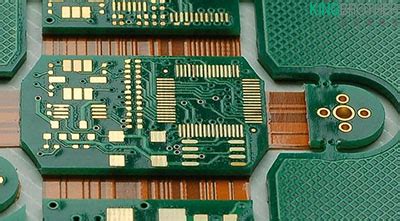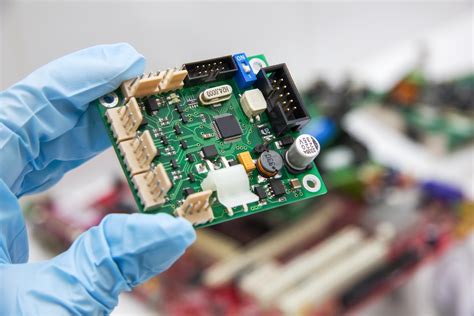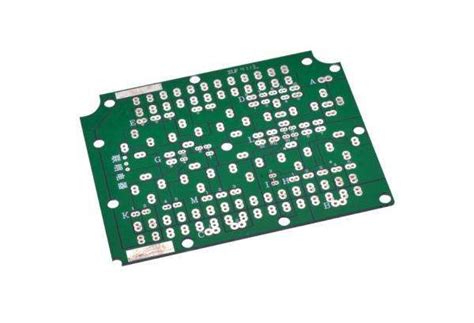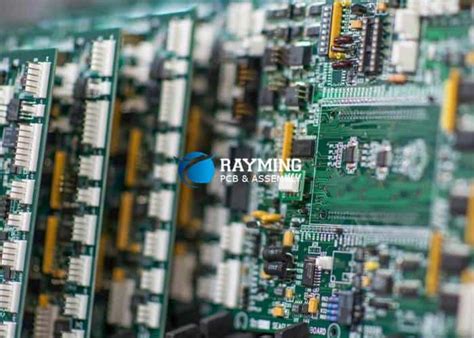Flexible PCB Thickness: A Comprehensive Guide
Introduction
Flexible Printed Circuit Boards (Flex PCBs) have become an integral part of modern electronics due to their ability to bend, fold, and conform to various shapes and spaces. Unlike traditional rigid PCBs, flex PCBs offer unparalleled design flexibility, making them ideal for applications in industries such as consumer electronics, automotive, medical devices, and aerospace. One of the critical factors that influence the performance, durability, and application of flex PCBs is their thickness. This article delves into the various aspects of flexible PCB thickness, including its impact on design, manufacturing, and application, as well as the factors that determine the optimal thickness for different use cases.
Understanding Flexible PCB Thickness
The thickness of a flexible PCB is determined by the combination of its base material, adhesive layers, and conductive layers. Typically, a flex PCB consists of a flexible substrate (usually polyimide), copper layers for conductivity, and adhesive layers to bond the copper to the substrate. The overall thickness of a flex PCB can range from a few micrometers to several millimeters, depending on the number of layers and the specific requirements of the application.
Key Components Affecting Flex PCB Thickness
- Substrate Material: The most common substrate material for flex PCBs is polyimide, known for its excellent thermal stability, flexibility, and mechanical strength. The thickness of the polyimide substrate typically ranges from 12.5 µm to 125 µm. Thinner substrates offer greater flexibility but may be more challenging to handle during manufacturing.
- Copper Layers: The conductive layers in a flex PCB are made of copper, which can vary in thickness depending on the current-carrying requirements and the desired flexibility. Copper thickness is usually measured in ounces (oz), with 1 oz copper being approximately 35 µm thick. Thicker copper layers provide better current-carrying capacity but reduce flexibility.
- Adhesive Layers: Adhesive layers are used to bond the copper layers to the substrate. The thickness of these layers can vary, but they are generally in the range of 10 µm to 25 µm. The choice of adhesive can also affect the overall flexibility and thermal performance of the PCB.
- Coverlay or Solder Mask: A coverlay or solder mask is applied to protect the copper traces and provide insulation. The thickness of the coverlay can range from 12.5 µm to 50 µm. Thicker coverlays offer better protection but may reduce flexibility.
- Stiffeners: In some applications, stiffeners are added to specific areas of the flex PCB to provide mechanical support and rigidity. Stiffeners are typically made of materials like FR4 or polyimide and can significantly increase the overall thickness of the PCB in those areas.
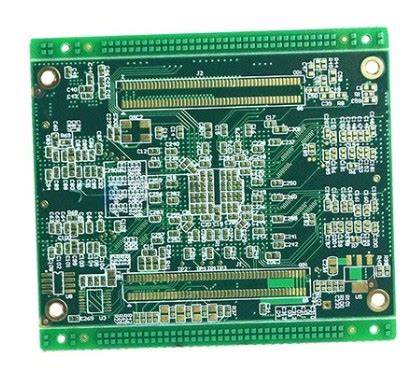
Impact of Thickness on Flex PCB Performance
The thickness of a flex PCB has a direct impact on its performance, including flexibility, durability, thermal management, and electrical performance.
- Flexibility: Thinner flex PCBs are more flexible and can bend to tighter radii without cracking or breaking. This makes them suitable for applications where the PCB needs to conform to tight spaces or undergo repeated bending, such as in wearable devices or foldable smartphones. However, extremely thin PCBs may be more prone to damage during handling and assembly.
- Durability: Thicker flex PCBs are generally more durable and can withstand harsher environmental conditions, including higher temperatures and mechanical stress. This makes them suitable for applications in automotive or aerospace industries, where the PCB may be exposed to extreme conditions.
- Thermal Management: Thicker copper layers and substrates can improve the thermal conductivity of the PCB, helping to dissipate heat more effectively. This is particularly important in high-power applications where heat generation can affect the performance and lifespan of the PCB.
- Electrical Performance: The thickness of the copper layers affects the electrical performance of the PCB, including its impedance and current-carrying capacity. Thicker copper layers can carry higher currents and reduce resistive losses, but they may also increase the overall thickness and reduce flexibility.
Factors Influencing the Choice of Flex PCB Thickness
Several factors influence the choice of flex PCB thickness for a specific application:
- Application Requirements: The intended use of the flex PCB is the primary factor in determining its thickness. For example, a flex PCB used in a wearable device may require a thinner, more flexible design, while a PCB used in an automotive application may need to be thicker and more durable.
- Mechanical Stress: The level of mechanical stress the PCB will be subjected to during its lifetime is another critical factor. PCBs that will undergo frequent bending or flexing should be designed with thinner, more flexible materials, while those in static applications can afford to be thicker.
- Environmental Conditions: The operating environment, including temperature, humidity, and exposure to chemicals, can influence the choice of materials and thickness. Harsher environments may require thicker, more robust PCBs to ensure reliability and longevity.
- Manufacturing Constraints: The manufacturing process can also impact the choice of thickness. Thinner PCBs may be more challenging to handle and assemble, requiring specialized equipment and processes. Additionally, the number of layers and the complexity of the design can affect the overall thickness.
- Cost Considerations: Thinner PCBs may require more expensive materials and manufacturing processes, which can increase the overall cost. Balancing performance requirements with cost considerations is essential in selecting the appropriate thickness.
Common Thickness Options for Flex PCBs
Flex PCBs are available in a range of thicknesses to suit different applications. Some common thickness options include:
- Single-Layer Flex PCBs: These are the simplest and thinnest type of flex PCBs, typically ranging from 0.1 mm to 0.3 mm in thickness. They consist of a single layer of copper on a polyimide substrate, with a coverlay for protection. Single-layer flex PCBs are commonly used in applications where space and weight are critical, such as in mobile devices and wearable technology.
- Double-Layer Flex PCBs: Double-layer flex PCBs have two layers of copper separated by a polyimide substrate, with a coverlay on both sides. The thickness of double-layer flex PCBs typically ranges from 0.2 mm to 0.5 mm. These PCBs offer more design flexibility and are used in applications requiring more complex circuitry.
- Multi-Layer Flex PCBs: Multi-layer flex PCBs consist of three or more layers of copper, separated by polyimide substrates and adhesive layers. The thickness of multi-layer flex PCBs can vary widely, from 0.3 mm to several millimeters, depending on the number of layers and the specific design requirements. Multi-layer flex PCBs are used in high-density applications where space is limited, and complex circuitry is required.
- Rigid-Flex PCBs: Rigid-flex PCBs combine rigid and flexible sections, allowing for greater design flexibility and durability. The thickness of rigid-flex PCBs can vary significantly, depending on the number of layers and the materials used. Rigid-flex PCBs are commonly used in applications requiring both flexibility and structural support, such as in medical devices and aerospace systems.
Design Considerations for Flex PCB Thickness
When designing a flex PCB, several considerations related to thickness must be taken into account to ensure optimal performance and reliability:
- Bend Radius: The bend radius is the minimum radius at which a flex PCB can be bent without causing damage. Thinner PCBs can achieve tighter bend radii, but the design must ensure that the bend radius is within the limits of the materials used to prevent cracking or delamination.
- Layer Stackup: The arrangement of layers in a multi-layer flex PCB can affect its overall thickness and flexibility. Careful consideration must be given to the placement of copper layers, adhesive layers, and coverlays to achieve the desired balance between flexibility and performance.
- Thermal Management: The thickness of the copper layers and substrates can impact the thermal performance of the PCB. Designers must consider the thermal conductivity of the materials and the heat dissipation requirements of the application to prevent overheating and ensure reliability.
- Impedance Control: The thickness of the dielectric layers and the copper traces can affect the impedance of the PCB. Impedance control is critical in high-speed and high-frequency applications, where signal integrity is paramount.
- Mechanical Support: In applications where the flex PCB will be subjected to mechanical stress, additional support may be required. This can be achieved through the use of stiffeners or by designing the PCB with thicker materials in areas that require more rigidity.

Manufacturing Challenges Related to Flex PCB Thickness
The manufacturing of flex PCBs presents several challenges related to thickness, including:
- Handling Thin Materials: Thinner flex PCBs are more delicate and can be challenging to handle during the manufacturing process. Specialized equipment and techniques are required to prevent damage during cutting, drilling, and assembly.
- Layer Alignment: In multi-layer flex PCBs, precise alignment of the layers is critical to ensure proper electrical connections and prevent short circuits. The thinner the materials, the more challenging it becomes to achieve accurate alignment.
- Adhesive Application: The application of adhesive layers must be carefully controlled to ensure even distribution and proper bonding. Uneven adhesive application can lead to delamination or reduced flexibility.
- Thermal Management During Manufacturing: The manufacturing process involves several thermal cycles, including lamination and soldering. The thickness of the materials can affect how heat is distributed and dissipated during these processes, impacting the quality and reliability of the final product.
Conclusion
The thickness of a flexible PCB is a critical factor that influences its performance, durability, and suitability for specific applications. Designers and manufacturers must carefully consider the various components that contribute to the overall thickness, including the substrate, copper layers, adhesive, and coverlay. By understanding the impact of thickness on flexibility, durability, thermal management, and electrical performance, it is possible to select the optimal thickness for a given application. Additionally, addressing the manufacturing challenges associated with different thicknesses is essential to ensure the production of high-quality, reliable flex PCBs. As the demand for flexible electronics continues to grow, the importance of understanding and optimizing flex PCB thickness will only increase, driving innovation and advancements in this field.

